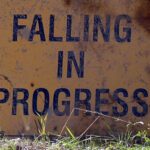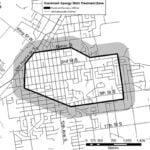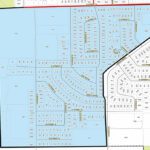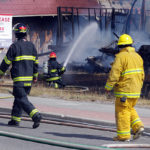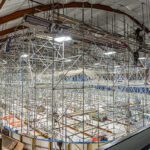Home »

Parks Canada ecosystem scientist long-term chair of KCP
Faces & Places: Derek Petersen
Story by Nicole Trigg
Kootenay Conservation Program
When the Kootenay Conservation Program (KCP) first formed in 2002 as the East Kootenay Conservation Program, Parks Canada was one of the first agencies to join and Derek Petersen was one of several parks staff on rotating participation.
But in 2005, Derek decided to jump in as the full-time Parks Canada representative and has been actively involved ever since. He became KCP’s Executive Committee (now KCP Board) Vice Chair in 2007 and assumed the Chair role in 2013 to the present.
“Parks Canada was on-board as an ecosystem partner and participant right from the initial start-up discussions for KCP,” said Derek.
Born and raised in Saskatchewan, Derek has a Master’s degree in Science, an undergraduate degree in Environmental Studies and Economics and a diploma in Renewable Resources Technology. When he started his Parks Canada career in 1983, it was as a traditional park warden for parks across western and northern Canada. He stepped into the science role of Ecosystem Specialist when he moved to Yoho in 1993 and has been involved in various science, planning and biological roles across Yoho, Banff and Kootenay National Parks ever since.
Five years ago, Derek became the Ecological Integrity Monitoring Coordinator for the Lake Louise-Yoho-Kootenay and Banff Field Units and began leading the ecosystem monitoring team for the three mountain national parks. He is based out of the Kootenay National Park Administration building in Radium Hot Springs.
“We started a number of years ago developing these Ecological Integrity (EI) monitoring programs across the national parks system. For my area of responsibility, we came up with a suite of three indicators — freshwater, forests and alpine — and for each one of the indicators we identified 5 environmental measures that we track, assess and report on in perpetuity. The results of the analysis of the monitoring data is used to generate annual reports on the health of these national park ecosystems, culminating every five and ten years in a major summary document, tied to the park management planning cycle, which is called the State of the Park Report.”
Derek appreciates his long-standing KCP involvement for the unique perspective it gives him.
“Certainly it’s been interesting being involved from the first days and watching it evolve and morph and, in 2012, bridge together conservation work in the East and West Kootenay and become the KCP,” he said. “We had good support for it right from the start, which demonstrated that a strong environmental community already existed, and that there was a willingness and desire to work together in the name of conservation.”
Nevertheless, the KCP Partnership has grown bigger than he ever envisioned, and far more effective in terms of people working together, creating synergy within the conservation community, and the coordination that’s taken place on the land securement and stewardship fronts.
“Both the KCP contract team, the board members and the partners have been a great bunch of people to work with and I share the environmental ethic that we collectively, as well as the public see for the Kootenays, for the role and value of conservation within our backyards. It’s been an exciting venture for sure and truly does represent ‘our way of life insurance’ for the Kootenays.”
Learn more about the Parks Canada management planning process.
The Kootenay Conservation Program is a broad partnership of over 80 organizations from across the Kootenays that works to conserve landscapes in order to sustain naturally functioning ecosystems. Learn more at www.kootenayconservation.ca.
